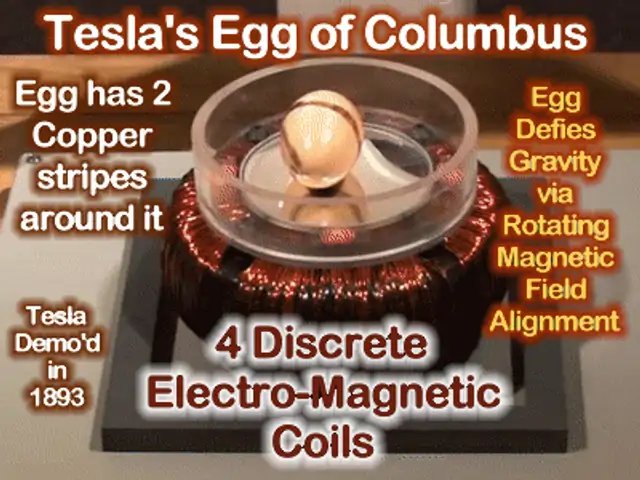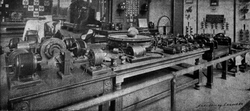Tesla's Egg of Columbus

Tesla's Egg of Columbus
Nikola Tesla, at the 1893 World's Columbian Exposition, [4] demonstrated a device he constructed known as the "Egg of Columbus." It was used to demonstrate and explain the principles of the rotating magnetic field model and the induction motor. Tesla's Egg of Columbus performed the feat of Columbus with a copper egg in a rotating magnetic field. The egg spins on its major axis, standing on end due to rotating magnetic fields alignment, also called a gyroscopic action.
When AC power is supplied, the egg (which may be filled with steel wool or contain copper) responds to the rotating magnetic field by spinning and, eventually, standing on its end.
Steel wool, like copper, conducts electricity and reacts to the external rotating magnetic field - attempting to be optimally aligned at the smallest (atomic-subatomic [2], see also Spin (physics), Magnetic moment and Subatomic particle) and macro (molecular-structural level) with that rotating magnetic field. Note that the egg by standing up length-wise, versus laying down, is displaying Anti-gravity characteristics.
At higher Tesla (unit) values -Dipole-inducible molecular structures (most if even nearly all matter) may be levitated. For example, water is Diamagnetic and may be levitated in 10 Tesla or greater magnetic fields (10T as compared to Earth's magnetic field strength of only about 50 μT or 5×10 -5 T). [0]
Tesla's device used a toroidal iron core stator on which four electromagnetic coils were wound. The device was powered by a two-phase alternating current source (such as a variable speed alternator) to create the rotating magnetic field. The device operated on 25 to 300 hertz frequency. The ideal operating frequency was described as being between 35 and 40 hertz. Reproductions of the device are displayed at the Nikola Tesla Museum in Belgrade, the Memorial Centre "Nikola Tesla" in Smiljan, the Technical Museum in Zagreb, the Croatian History Museum in Zagreb and in the Ann Arbor Hands-On Museum.



